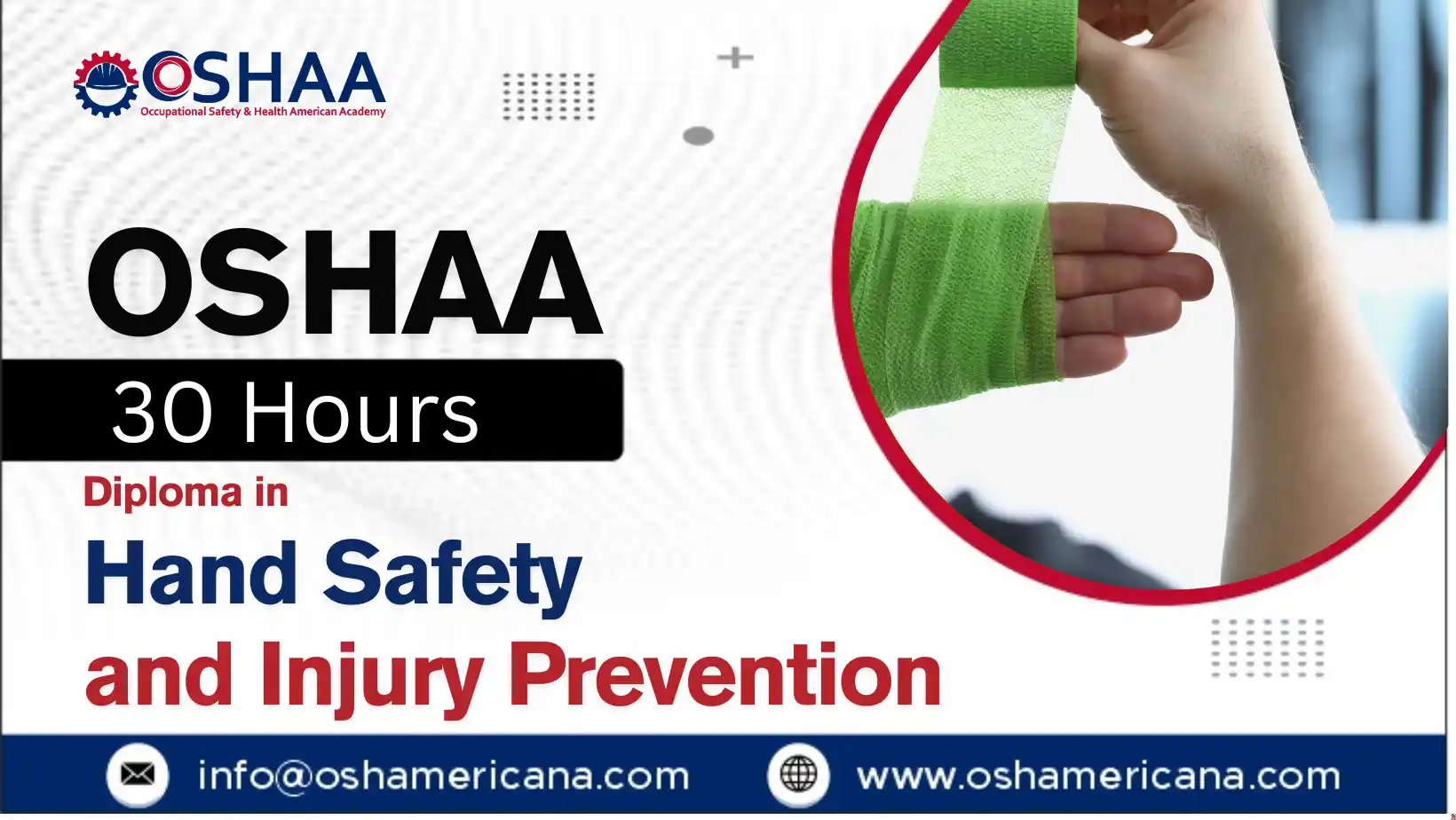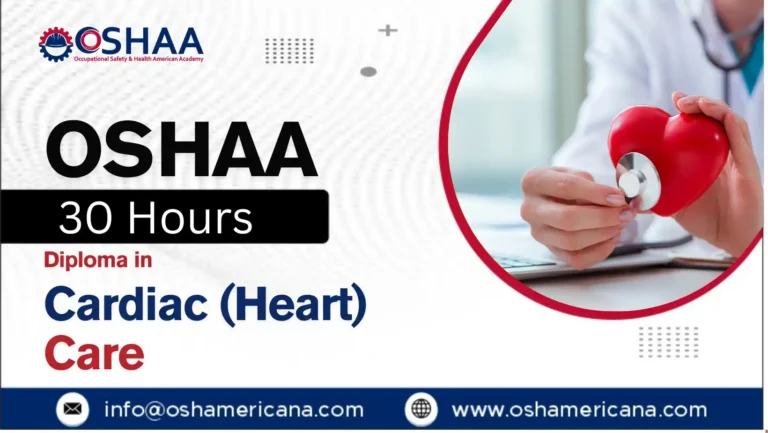The OSHAA 30-Hours Professional Diploma in Hand Safety and Injury Prevention is a comprehensive training programme developed to address one of the most common and preventable categories of workplace injuries—those involving the hands and upper extremities. Designed for participants across a range of industries, the course offers essential knowledge, practical strategies, and risk reduction techniques that contribute to safer working environments and improved occupational health outcomes.
Hand injuries account for a significant percentage of workplace incidents worldwide, often resulting in time off work, loss of productivity, and long-term disability. This diploma is structured to give participants an in-depth understanding of hand anatomy, common injury mechanisms, and effective prevention strategies. It also explores the role of protective equipment, ergonomics, hazard identification, and workplace policy in promoting safety.
Through 30 hours of guided learning, participants will examine case studies, safety protocols, and practical tools to identify risks and implement targeted interventions. The course integrates both theoretical foundations and practical applications to prepare participants for immediate and long-term impact in safety-conscious work settings.
Completion of this diploma may lead participants to advanced training in occupational health, ergonomics, risk management, or industry-specific safety certifications. It also strengthens eligibility for positions requiring health and safety compliance oversight.
The OSHAA 30-Hours Professional Diploma in Hand Safety and Injury Prevention equips participants with the expertise needed to recognise hazards, prevent injury, and champion workplace safety. With a focus on practical, real-world solutions, this course is a valuable investment in both individual careers and broader organisational wellbeing.
OSHAA 30-Hours Professional Diploma in Hand Safety and Injury Prevention
Study Units
Learning Outcomes
Introduction to Hand Safety and Occupational Risk (3 hours)
- Understand the importance of hand safety in occupational environments
- Identify the most common workplace settings where hand injuries occur
- Explore the financial, physical, and operational consequences of hand injuries
- Recognise the role of training and awareness in reducing injury risks
Anatomy of the Hand and Common Injury Mechanisms (3 hours)
- Learn the basic anatomy and functional structure of the hand
- Understand how bones, tendons, nerves, and muscles interact in daily tasks
- Identify the mechanical, thermal, chemical, and biological forces that cause injury
- Explore how different job roles expose the hand to specific injury risks
Types of Hand Injuries: Causes and Consequences (4 hours)
- Identify common types of hand injuries such as lacerations, crush injuries, burns, fractures, and amputations
- Understand the short- and long-term consequences of hand injuries on functionality and productivity
- Analyse real-world case examples and incident reports for learning purposes
- Recognise the psychological and occupational impact of long-term hand injury
Hazard Identification and Risk Assessment Techniques (6 hours)
- Learn how to perform structured hazard identification in various work environments
- Understand risk assessment principles and how to apply them to hand safety
- Use tools such as job safety analysis (JSA) and hazard control hierarchies
- Develop the ability to recognise hidden and emerging risks to hand safety
- Formulate risk reduction strategies based on severity and likelihood
- Support the development of safety improvement plans using collected data
Personal Protective Equipment (PPE) for Hand Protection (3 hours)
- Understand the different categories of gloves and hand protection available
- Learn how to select PPE appropriate to specific tasks and hazards
- Explore standards and certifications relevant to hand PPE
- Develop skills in proper inspection, usage, and maintenance of PPE
Ergonomics and Repetitive Strain Injury Prevention (5 hours)
- Understand the relationship between poor ergonomics and repetitive strain injuries (RSIs)
- Identify common hand-intensive tasks that lead to chronic strain or fatigue
- Explore ergonomic tools, equipment design, and workplace layout considerations
- Learn practical techniques for reducing repetitive motions and promoting healthy work habits
- Develop preventative strategies and early intervention methods for RSIs
Safety Procedures for Tools, Machinery, and Handling (4 hours)
- Learn how improper use of tools and machinery contributes to hand injuries
- Understand lockout/tagout procedures and mechanical safeguards
- Explore best practices for manual handling and safe lifting techniques
- Identify hand injury risks associated with common industrial and maintenance tools
First Aid and Immediate Response for Hand Injuries (2 hours)
- Understand initial response protocols for different types of hand injuries
- Learn how to manage bleeding, fractures, burns, and amputations until medical help arrives
- Gain confidence in using workplace first aid kits and reporting incidents promptly
- Recognise when to escalate to professional medical intervention and how to document injuries effectively
The OSHAA 30-Hours Professional Diploma in Hand Safety and Injury Prevention offers practical and industry-relevant knowledge to support safer workplaces and reduce preventable injuries. Participants will benefit from focused learning that enhances awareness, competence, and risk management strategies in hand safety.
- Gain a thorough understanding of hand anatomy, injury types, and prevention strategies
- Identify workplace hazards and implement effective risk assessment techniques
- Strengthen knowledge of personal protective equipment (PPE) and its correct application
- Apply ergonomic principles to minimise repetitive strain and long-term injuries
- Learn best practices for handling tools, machinery, and hazardous materials safely
- Acquire essential first aid skills specific to hand and upper limb injuries
- Promote a proactive safety culture that reduces downtime, claims, and injuries
- Improve workplace compliance with health and safety legislation and standards
- Enhance professional development for roles in occupational health, safety, and industrial operations
- Earn a recognised qualification that demonstrates commitment to injury prevention and workplace wellbeing
The OSHAA 30-Hours Professional Diploma in Hand Safety and Injury Prevention is designed for participants across a range of industries where manual work, machinery, or tool use is part of daily operations. It is particularly suited to individuals responsible for safety, supervision, or frontline operations, as well as those seeking to enhance their knowledge of workplace injury prevention.
- Health and safety officers aiming to strengthen their hand protection protocols
- Industrial workers, technicians, and machinery operators exposed to physical risks
- Supervisors and line managers overseeing manual handling or tool-intensive tasks
- Warehouse, logistics, and construction professionals involved in operational safety
- HR, compliance, and training personnel responsible for staff safety education
- Participants preparing for roles in occupational health, risk management, or safety consultancy
- Anyone working in environments where hand injury is a known or emerging risk
The course is accessible to all participants, regardless of prior health and safety training, and is valuable for both entry-level and experienced professionals committed to safer work practices.







